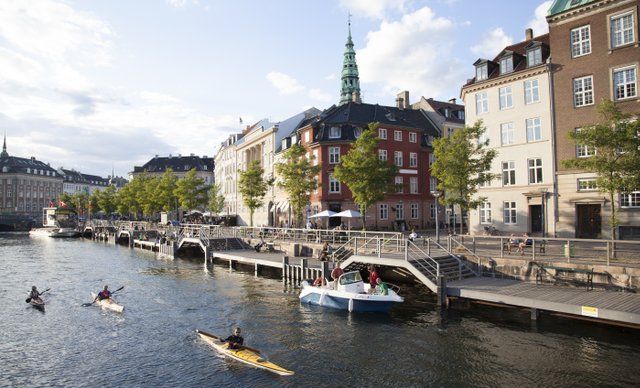After four years in possession of a photo that shows police officers escorting an innocent man into the back of a van, where he was subsequently subjected to hours of humiliating treatment, the public prosecutor says it has given up on identifying the officers in the photo.
On 8 December 2009, as Copenhagen hosted the COP15 climate conference, police officers stopped ‘Muhammed’ while he was on his way to work at a removal firm. He was arrested when the name of one of the men he had taken with him to do the job was mistaken for that of an international terrorist.
Muhammed was placed in the back of a police van with several police officers, who he says blindfolded and berated him, denied him access to a toilet and forced him to urinate into plastic bottles, which spilled on him.
READ MORE: Police misconduct investigation to be reopened after criticism
"We experienced a nightmare"
His wife was also arrested in the couple’s flat, while a 61-year-old woman was arrested in the flat Muhammed had been employed to clear.
After 13 hours, the police came to realise that it was a case of mistaken identity and released all three of them, but the experience was traumatising.
“We experienced a nightmare when we were arrested and suspected of being terrorists,” Muhammed’s wife, who did not want her name used, told Politiken newspaper in August 2012.
The couple complained about the treatment, but four years later no police officer has faced punishment for the incident. That fact is hard for many to swallow, given that a photo of the involved officers has been widely published.
READ MORE: Calls for Police to wear ID numbers
Complaints commission gives up
Now the independent police complaints commission, Den Uafhængige Politiklagemyndighed (DUP), says it has given up on identifying the officers.
“It is not at all satisfying,” the head of DUP, Kirsten Dyrman, told Politiken newspaper.
Dyrman said that DUP was in contact with over 80 police officers while carrying out its investigation. Copenhagen Police told DUP that it could not say which officers were involved in wrongfully confinement.
DUP is not the first organisation to be stymied in its efforts to identify the police officers. Copenhagen Police’s public prosecutor, Lise-Lotte Nilas, had to suspend the case against the police officers in August 2012 after being unable to identify them. After a wave of criticism, Nilas announced she would re-open the case but has still been unable to identify the involved officers.
READ MORE: Police uniforms to reportedly add colour codes
No ID numbers
Muhammed’s wife has said she thinks something is clearly afoot within the department.
“When the police recognise that they have made a mistake, it is frightening that they can get away with saying they don’t know who they were,” she told Politiken last year. “I can’t help but think that they are covering for each other.”
The case led to numerous calls for Danish police officers to wear uniform numbers, as is the case of many other countries. In August 2012, the Justice Ministry reported that it was working with police on a plan that would use a mixture of colour codes and numbers on an officer’s uniform to identify their function. It would not include a badge or collar number that would reveal the individual officer’s identity.
At the time, the justice minister, Morten Bødskov (S), promised to clarify the situation “within a few months”, but no recommendation has been announced. When The Copenhagen Post contacted the ministry today, we were given the same “few months” timeframe.















